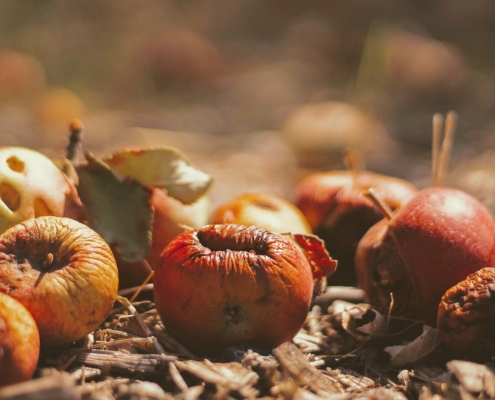Four things you didn’t know you could do with food waste
By BBC, Learn & revise
What to do with a problem like food waste?
The United Nations Environment Programme (UNEP) put out a report this year that estimates around 931 million tonnes of food waste was generated around the world in 2019. This is having a big impact on our climate – the UNEP says there are estimates to suggest 8-10% of global greenhouse gas emissions can be linked to food waste, from food thrown away in supermarkets to the parts we chuck out at home.
Make clothes
When looking at your food waste bin in your kitchen, high fashion is probably the last thing that comes to mind. But innovators across the world are turning the odds and ends we’d usually throw away into materials we can wear.
For example, the discarded bits of plants such as coconuts and pineapples can make durable faux leather. The latter makes a fabric called piña, which originated in the Philippines but can also be found in other places such as Hawaii, Brazil and Indonesia.
Make more food
When you’re cooking, there are lots of bits that you chop off and get rid of, like peels, ends and wonky bits. But before you go to throw your food waste away, you may want to stop and think about what other edible treats you could make from it. There are plenty of ways you can get creative, such as by making pickles and relishes, or using peels to infuse your water.
Take coffee for example – coffee beans are actually seeds and grow inside a fruit called a coffee cherry. Traditionally these cherries would be discarded once the bean had been removed, but people are now reclaiming this once overlooked husk and using it in their cooking.
Use in your skincare routine
Some people and companies finding innovative ways of using waste to provide the nutrients they think our faces need. For example, you might see ground fruit stones on the ingredients list of your face mask or exfoliator as they are great at scrubbing away dirt and dead skin.
For gardening and reforesting
Researchers at universities in Zurich and Hawaii have found that used coffee grounds can help boost forest recovery on lands that were once used for agriculture.
Their paper published earlier this year found that after just two years of being treated with coffee pulp, the area they studied in Costa Rica had 80% more canopy cover compared to 20% in a similar sized area that hadn’t been treated with coffee waste.
> Source: BBC – Bitesize



 Credit: pexel @pixabay /CC0 Public Domain
Credit: pexel @pixabay /CC0 Public Domain Credit: pexel @Andrei Lasc/CC0 Public Domain
Credit: pexel @Andrei Lasc/CC0 Public Domain